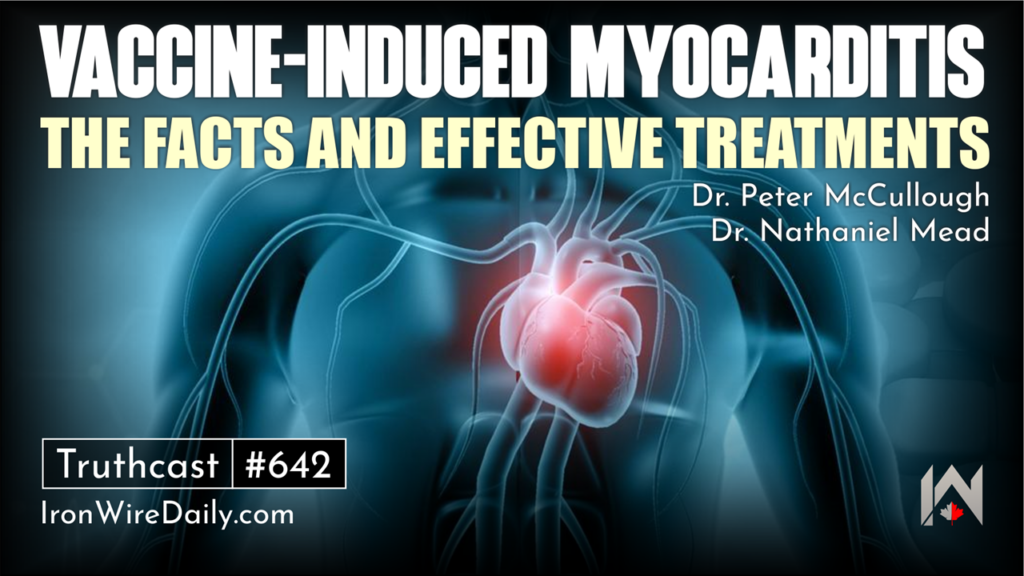New Research Reveals How Vaccines May Cause SIDS in Some Infants

Source: Children’s Health Defense
Underdeveloped liver enzyme pathways in some infants may make it harder for them to process toxic ingredients in vaccines, a condition that could lead to sudden infant death syndrome (SIDS), according to a new study published in the International Journal of Medical Sciences.
The study reviewed existing scientific literature, pharmacogenetic data, and epidemiological studies to investigate how infants’ immature or variable cytochrome P450 (CYP450) enzymes affect how they metabolize vaccine excipients, or inactive ingredients, and the implications for immune response and safety outcomes.
CYP450 enzymes, largely found in the liver, are crucial for metabolizing drugs.
The authors note that it is generally believed that excipients — inactive ingredients used as preservatives or to enhance a vaccine’s efficacy — are present in such trace amounts that they don’t affect how the body metabolizes a vaccine.
However, they argue that the increasing complexity of vaccine formulations and the large number of shots given to infants raise concerns about how excipients may affect vulnerable people.
Studies of infants who die from SIDS have noted brainstem and medulla abnormalities in most cases. Either of these may be caused by infection or inflammation.
In the study, the authors hypothesize that reduced CYP450 function may make it hard for some children to eliminate toxic vaccine ingredients. This may lead to prolonged exposure to inflammation, making the children more vulnerable to such abnormalities.
Those children are unable to safely tolerate the currently recommended vaccines.
“The result is a biologically plausible mechanism linking early-life vaccination to sudden infant death, particularly in those with genetic or developmental vulnerabilities,” according to epidemiologist Nicolas Hulscher, who first reported the study.
Ability of infants to metabolize toxins not fully developed, highly variable
Infants are born with an immature CYP450 enzyme system that matures over the first few years of life. Preterm and other infants can have particularly limited CYP450 capacity.
Karl Jablonowski, Ph.D., senior research scientist at Children’s Health Defense, said the CYP450 detoxification pathway is incomplete at birth because, until recently, babies’ bodies did not need to contend with multiple toxins.
“In the absence of modern medicine, the newborn baby consumes only mother’s milk,” he said, so a baby wouldn’t need to metabolize toxic excipients.
The authors noted that in addition to the pathways being only partially developed in all babies, some infants also inherit different genes that can affect their CYP450 systems.
The genetic differences can lead to CYP450 polymorphisms, or different expressions of the enzyme system, which can make some infants particularly limited in their capacity to eliminate toxins.
Excipients are generally present in trace levels in any given vaccine, but cumulative exposure from multiple vaccines in early infancy can easily exceed safe thresholds, particularly in infants with CYP450 polymorphisms, the authors said.
Preterm infants, who are more likely to have underdeveloped CYP450 pathways, are often given more vaccines than other infants, because they have altered immune responses and can’t achieve desired immunity markers without additional vaccine doses, the authors wrote.
“The human gestation time has grown shorter in modern medicine, with cesarean sections scheduled to preempt the onset of labor,” Jablonowski said. “It is common medical practice to give vaccines more aggressively to premature infants while their constitution is less capable of dealing with them.”
He added:
“A baby born in the U.S. today is expected to deal with the toxins contained in the hepatitis B vaccine at birth. And two months later — what can be described as a toxic onslaught — the vaccines for RSV, hepatitis B, rotavirus, diphtheria, tetanus, pertussis, Hib, pneumococcal, and poliovirus.”
CYP450 isn’t responsible for metabolizing all excipients. However, it does play a role for many of them, including adjuvants such as aluminum salts, widely used in vaccines and deemed safe by regulatory bodies. It also plays a role in metabolizing formaldehyde and polysorbate 80.
The authors of the new study also noted that immune activation from vaccination itself can suppress CYP450 enzyme activity.
“This sets off a dangerous feedback loop: the very immune activation triggered by vaccination further impairs the infant’s ability to detoxify toxic excipients — amplifying systemic toxicity,” Hulscher wrote.
Jablonowski noted that “Tylenol, still infuriatingly actively given to infants like the Shaw twins, also interacts with the CYP450 pathway. The last thing you want to do is clog up the mechanisms for removing toxins when you are inundating infants with toxins.”
CYP450 may be linked to SIDS and other neurodevelopmental disorders
Each year, the U.S. records more than five infant deaths per 1,000 live births, far exceeding the rates in other high-income countries. After birth defects and prematurity, SIDS is the third leading cause of death among infants.
VAERS data reveal that more than 75% of reported SIDS cases occur within a week of vaccination, peaking on day two, according to Hulscher, with the remaining cases occurring within two months of vaccination. This strongly suggests a biological link to vaccines, he wrote.
Evidence also shows that because there are no consistent postmortem protocols, SIDs investigations often fail to capture all cases and possible neuropathological causes, which may obscure the link to vaccines, the report authors noted.
The authors found that evidence in the peer-reviewed research supports their hypothesis that inflammation-induced suppression of the CYP450 enzymes raises questions about metabolic vulnerability among infants and suggests that it may be linked to SIDS, and also to other neurodevelopmental disorders and infant health issues.
They argue that limited metabolic capacity in early life increases the effects of toxic exposures and could be linked to conditions including autism spectrum disorder (ASD), attention-deficit/hyperactivity disorder (ADHD), epilepsy and learning disabilities.


This article was funded by critical thinkers like you.
The Defender is 100% reader-supported. No corporate sponsors. No paywalls. Our writers and editors rely on you to fund stories like this that mainstream media won’t write.
Study raises possibility of therapeutic interventions
The authors urge further research into these issues and argue that such research could have major implications for therapeutic interventions.
Current vaccination schedules don’t account for variation in infants’ ability to metabolize vaccines, or for the impact of polymorphisms in key enzymes, which may have serious consequences for infants who are poor metabolizers, they wrote.
Their results raise the possibility that infants could be screened for genetic polymorphisms related to CYP450. This could make it possible for clinicians to change drug dosing to minimize adverse effects and save lives.
It would help to support precision medicine, they said, adding:
“Understanding the metabolic impact of vaccine excipients and cumulative exposures could inform safer immunization practices. Integrating these insights into clinical practice may ultimately improve patient outcomes by aligning therapeutic interventions with individual metabolic profiles.”
Integrating “pharmacogenomics,” the study of how genes affect the way a person responds to medication, into vaccine risk assessment could significantly impact vaccine safety and efficacy for all infants.
“Together, these findings support the urgent removal of toxic excipients from vaccines — and a complete restructuring of the childhood hyper-vaccination schedule — as necessary steps toward Making America Healthy Again,” Hulscher said.
Jablonowski agreed. ”Incorporating pharmacogenomics and metabolomics into an assessment of vaccine risk is a sane idea that stands out in the otherwise reckless immunization practices.”
Related articles in The Defender
- Experts Raise Questions About SIDS After Study Shows Vaccinating Preterm Babies Greatly Increases Risk of Apnea
- The Plausible Connection between Vaccines and SIDS
- Media Slam NIH for Axing ‘Safe to Sleep’ Campaign — But Evidence Shows the Program Never Reduced SIDS Deaths
- 6-Month-Old Died After Receiving 6 Routine Vaccines at Wellness Visit















